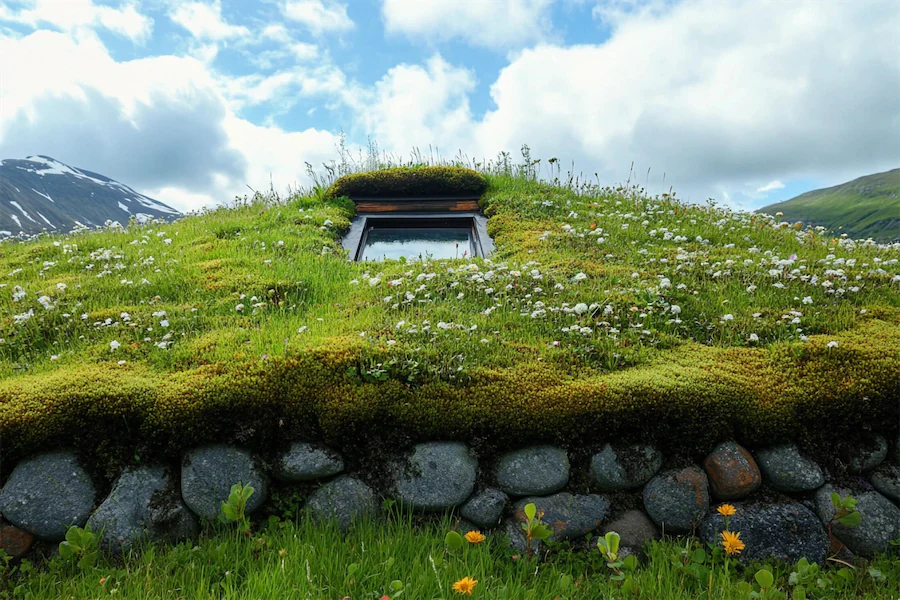Nordic sod roofs, also known as turf roofs, are traditional Scandinavian roofing systems that have been utilized for centuries. These roofs are characterized by a layer of sod laid over birch bark on gently sloping wooden roof boards, providing natural insulation and durability.
History and Origins of Nordic Sod Roofs
The use of sod roofs in Scandinavia dates back to prehistory, with widespread adoption during the Viking and Middle Ages. During this period, most houses featured sod roofs, while churches and buildings with steeper roofs were covered with boards, wood shingles, or lead. In rural areas, sod roofs remained prevalent until the 18th century, when tile roofs began to replace them in towns and rural manors. Despite this shift, sod roofs continued to be used in remote inland areas into the 19th century.
Key Features of Nordic Sod Roofs
Nordic sod roofs are notable for several distinctive features:
- Birch Bark Layer: Serving as the primary waterproofing element, multiple layers of birch bark are laid directly onto the wooden roof boards. Birch bark is strong, water-resistant, and can last for generations, making it an ideal material for this purpose.
- Sod Covering: A thick layer of sod is placed over the birch bark, acting as insulation and holding the bark in place. The sod’s weight, approximately 250 kg per square meter, helps compress the underlying logs, making the walls more draft-proof. In winter, this load can increase due to snow accumulation.
- Natural Insulation: The combination of birch bark and sod provides effective insulation against cold climates, maintaining interior warmth during harsh Nordic winters.
Applications of Nordic Sod Roofs
Traditionally, sod roofs were used on various types of buildings:
- Residential Homes: In rural Scandinavia, sod roofs were common on log houses, offering an accessible and efficient roofing solution.
- Farm Structures: Barns and storage buildings also featured sod roofs, benefiting from their insulating properties to protect livestock and stored goods.
- Modern Adaptations: Today, sod roofs have experienced a revival, appearing on mountain lodges, holiday homes, and eco-friendly buildings, appreciated for their aesthetic appeal and environmental benefits.
Considerations When Choosing Nordic Sod Roofs
When selecting or constructing a Nordic sod roof, consider the following:
- Structural Support: The substantial weight of the sod, especially when saturated with water or snow, requires a robust supporting structure to ensure stability and longevity.
- Maintenance: Regular upkeep is necessary to prevent overgrowth of vegetation and to address any potential water leakage issues, preserving the roof’s integrity.
- Material Sourcing: Access to quality birch bark and suitable sod is essential for authenticity and functionality, as these materials are integral to the roof’s performance.
Conclusion
Nordic sod roofs exemplify a harmonious blend of practicality and tradition, reflecting the resourcefulness of Scandinavian architecture. Their enduring presence in the region’s landscape underscores their effectiveness and timeless appeal, offering valuable insights into sustainable building practices.
